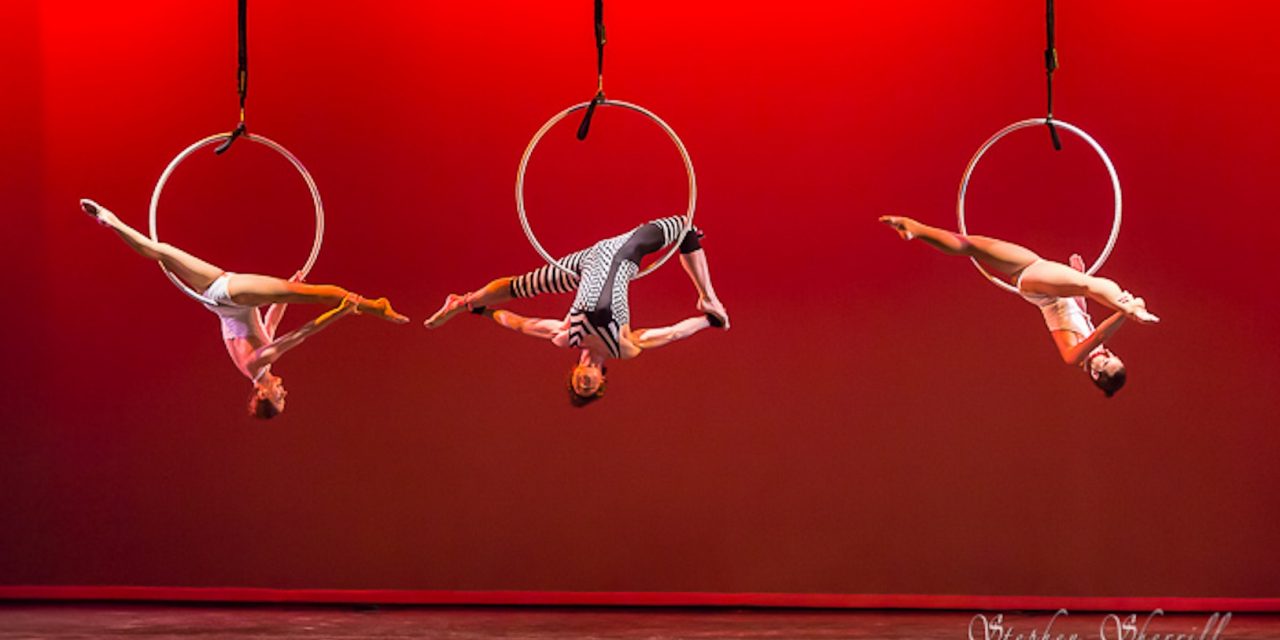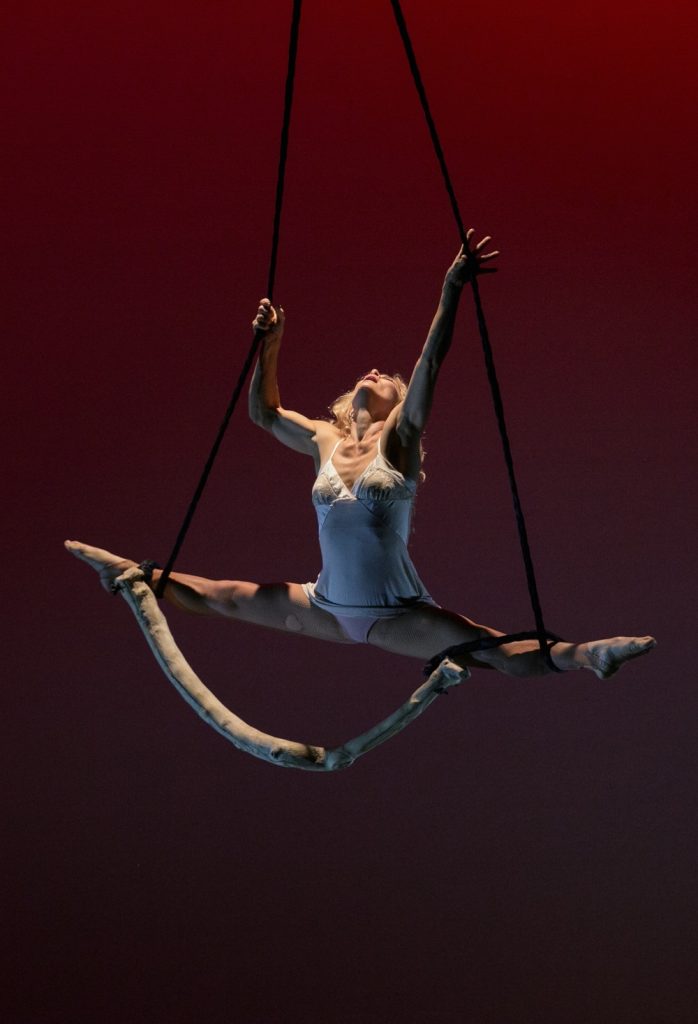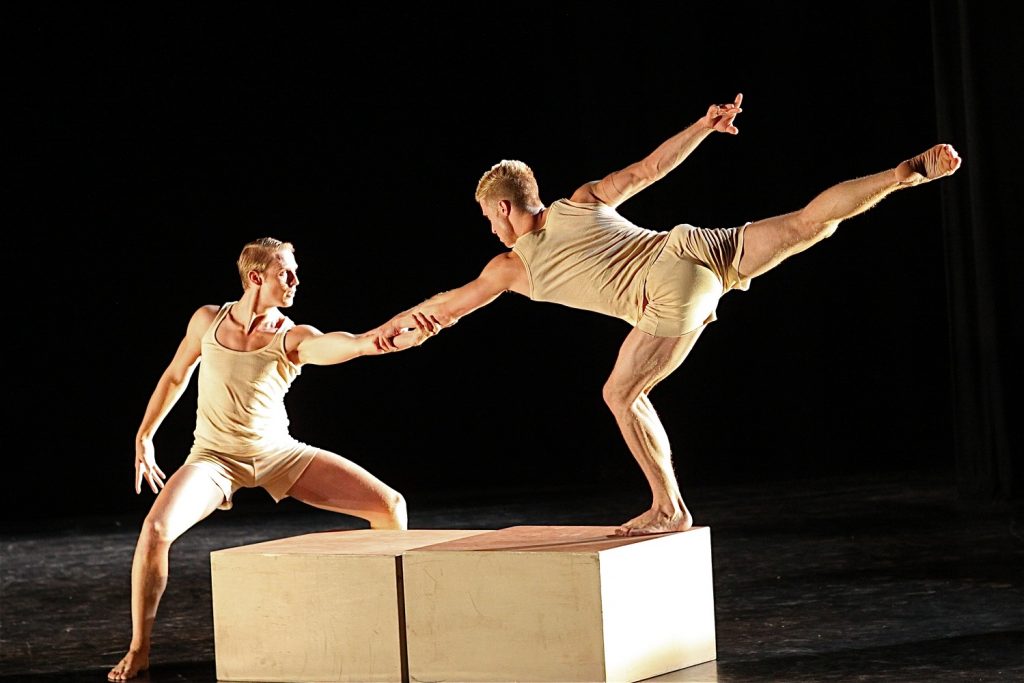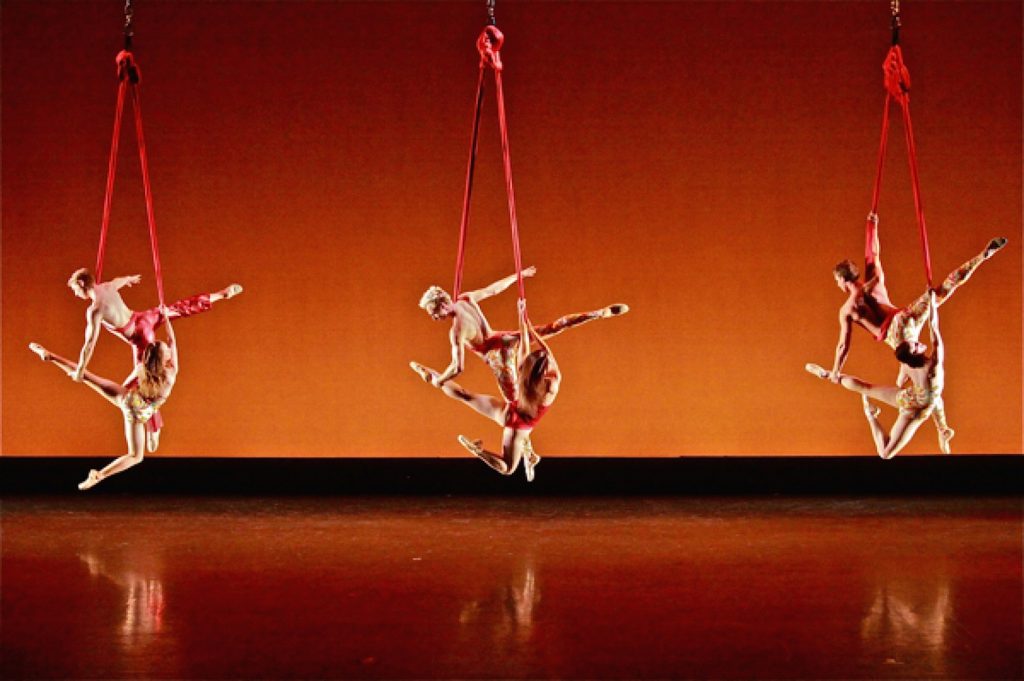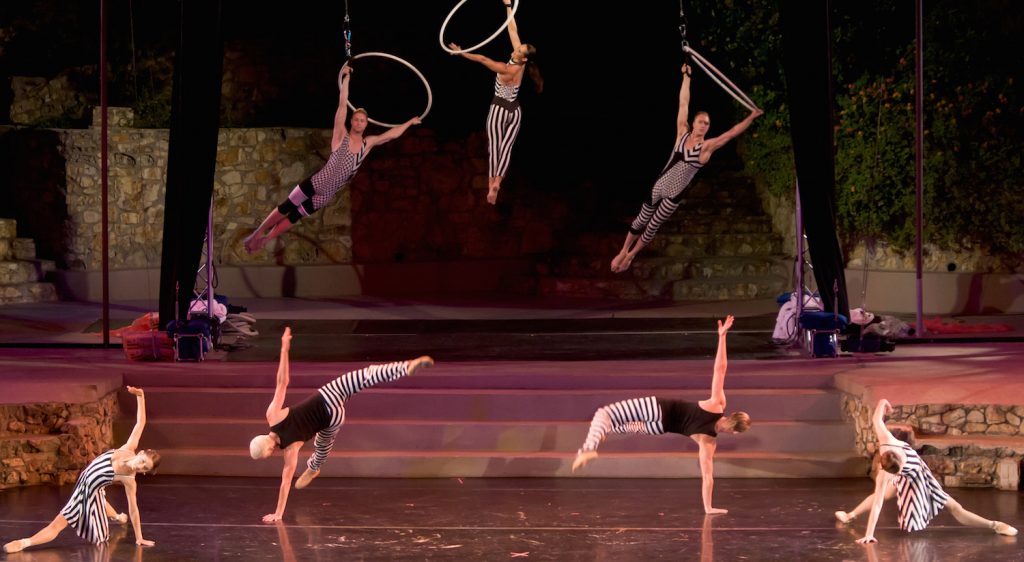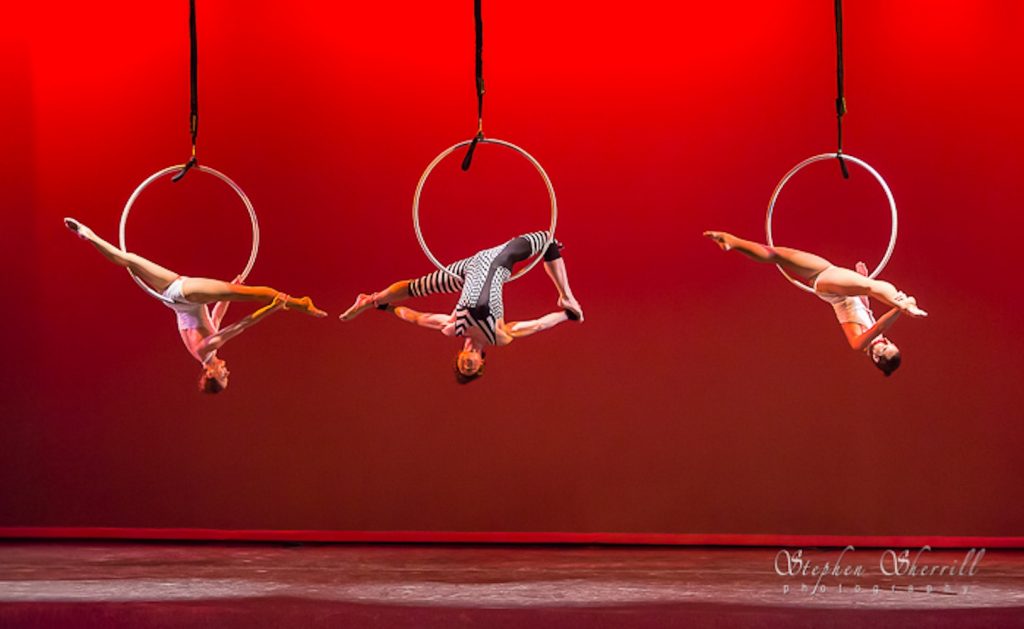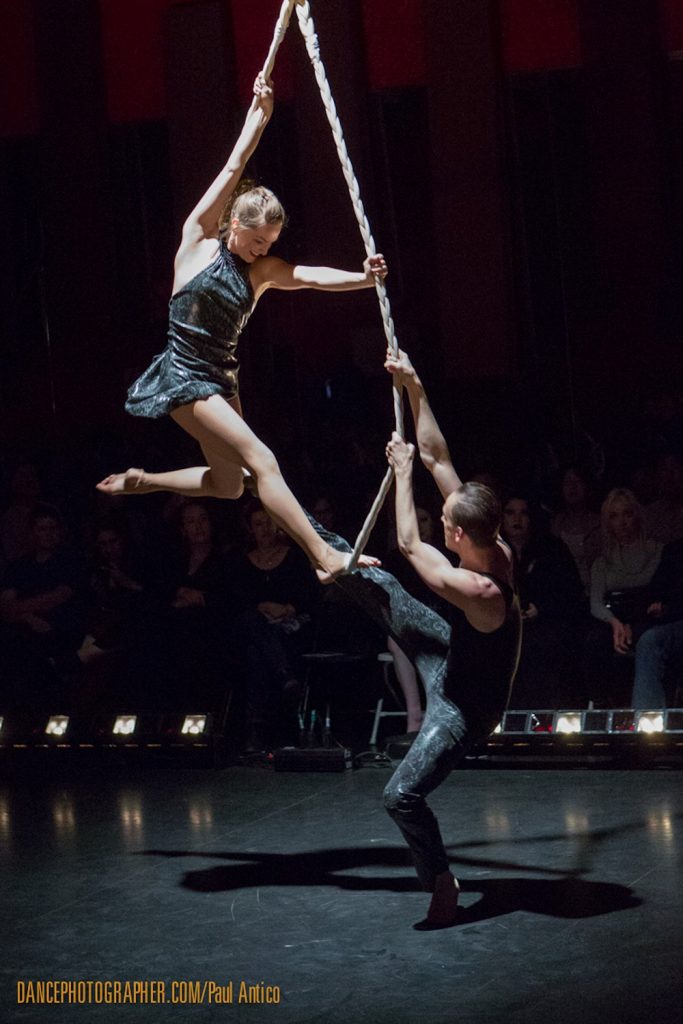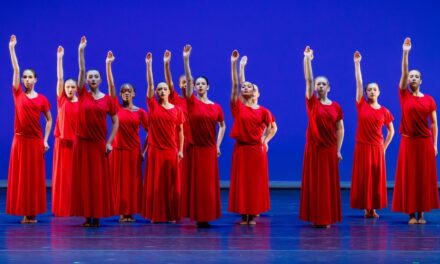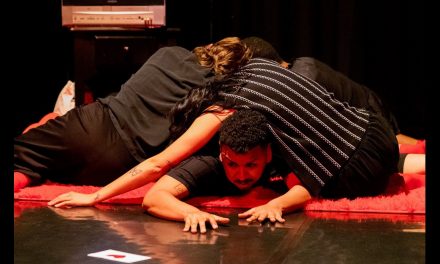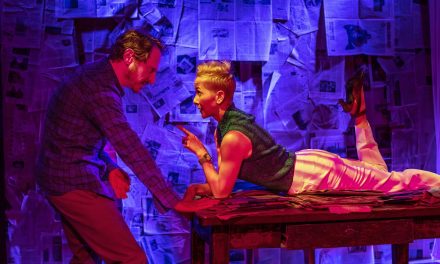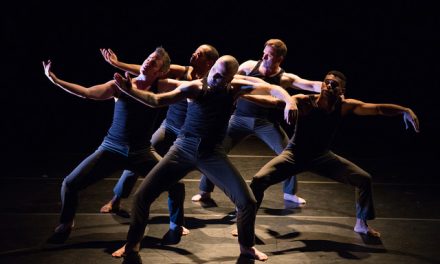Cafe Fais Do-Do is an enigma of a location for first time visitors. Designated a cafe, described as a club and designed as a warehouse with a stage and a small seven-drink bar along the back wall, the place doesn’t seem to know what it wants to be. But the vibe sure is fun! So it was with Luminario Ballet’s show “Choose Your Identity,” which ran as a fundraiser for the company from June 15 through 17. Set in what artistic director Judith FLEX Helle proclaimed to be their usual rehearsal space, much of the production was an exciting foray into beautiful dancing and daring aerial arts, all while lacking the typical cohesiveness found in most shows. The transitions were awkward, and the pieces unrelated. However, it was undoubtedly a very entertaining show that will have me seeking the company out again in the future.
Live music made up the first third of the show — specifically, Tawny Ellis and her band of hat-wearing musicians, who performed singer-songwriter numbers with Ellis on the lap steel and omni chord, Gio Loria on guitar and bass, Gio Loren on mandolin and lap steel, and Fitz Harris on drums. Ellis’ style was a good mix of country and folksy. The playing was excellent, and her sultry voice pleasant and distinguishable among the louder instruments.
After a few songs Ellis introduced the band and announced their pièce de résistance, two new songs from her newest album “Love Life” and were to be accompanied with dancing from members of Luminario.
The first song shared the album’s name and stated a need to be independent and free. The desire was reflected in ballerina Kelly Vittetoe’s performance as she bent at the waist, raised herself up to her full height and gently flapped her arms à la Swan Lake. The dance was a bit repetitive, grounding its moves in very basic classical ballet steps. However, Vittetoe’s form was very elegant.
“Pretend Love” carried with it a darker tone. Performed by Vittetoe who was joined by David Tai Kim and Windu Sayles, the short piece progressed in a similar vein, with the dancing becoming more exciting toward the end of the song. With both songs, the redundant movement came as a response to the chorus and musical phrasing. Helle’s choreography could have done with a bit more variety. However, like with the previous piece, the dancers were very talented. Throughout most of the work, Kim and Sayles flanked Vittetoe who took turns dancing with the two men and remained the center of the performance. The best moments were the strong lifts, which were done seamlessly and tied in that theme of freedom from the previous piece. A slight tease of the company’s upcoming aerial dances came by way of two white silks within which the company members intertwined their bodies and created a human swing — a thrilling moment cut short too soon.
The inclusion of TURF (1992), an athletic piece choreographed by Bella Lewitzky and reconstructed by John Pennington, was an odd choice. The work was undoubtedly beautiful and expressive as a response to the Rodney King Riots that had taken place in Los Angeles that same year. However, it did not fit in the middle of a show that based most of its music in rock ‘n’ roll and was the only piece that completely excluded any form of ballet or aerial arts.
Instead, TURF was a contemporary piece set to a soundtrack of militaristic snare drums by Larry Attaway. Five men (Kim, Sayles, AJ Abrams, Louis Williams, and Cory Goei) laid upon five separate blocks of square wood. Each guarded the blocks as their personal territories, unable to separate from them completely as they continued to touch and linger around them like metal to magnets. As the music grew more intense, the men began challenging one another, eventually maneuvering the blocks as shields and weapons of attack. The collisions evolved into cooperative competition, with the members helping each other up onto joint two or three-block islands. The piece concluded with the blocks piling up together and the men climbing up on top of each other, holding on tightly, while still establishing a hierarchy within their manmade tower.
Winding its way back to aerial arts was Lift Ticket (2011), choreographed by Helle and performed with late ’60s/early ’70s style music by Beta Band, Swingle Singers and Big Milk. Dancers included Abrams, Sayles, Williams, Vittetoe, Sadie Black, and Jessica Delgado, whose aerial performance stunned. The beginning of the piece was very vogue with disco-era art deco printed costumes in summer colors, and plenty of runway strutting. The group then transitioned upstage to stretch a long, red sheet across the space, along which they imprinted their bodies, creating outlines of odd shapes and contorted silhouettes in a creepy, alluring way. The women then climbed into the three hanging, red silks, wrapping their bodies in them as a guitar strum, coaxing out a leg, then encouraging a split as the artists cocooned themselves before emerging to show off their bodies. Below them, the men spun them around and later joined them, creating upside down crosses and a plenty of other shapes requiring an incredible amount of strength and resilience. The ending however fizzled out suddenly without any sort of indication that the piece had finished.
LedZAerial (2006) was the phenomenal three-part grand finale, set to the best of Led Zeppelin. The first section was preceded by a “Witch Piece” (2008) skit by choreographer/soloist Dreya Weber, who got a lot of laughs when she abducted an unsuspecting male member from the audience and cast him as her object of affection whom she desperately wanted to move on from. Weber released him as she undressed down to a little black slip and began dancing to “I Can’t Quit You Baby” on silks. Her solo was powerful and included a lot of heart stopping drops and twists — perhaps the most compelling of the night as she wiggled her way up and down the smooth material, often dangling by nothing more than her foot.
The second part, “What Is and What Should Never Be” was a duet between Weber and Abrams on aerial rope. Together they worked through different sexual positions, pumping to keep the rope bouncing in order to get more air, and in order to maintain the illusion of coitus. The piece was very well executed with both dancers maintaining the limberness necessary to keep going, without becoming tasteless or grotesque.
“Ramble On” was the final piece, choreographed by Helle, Weber, and Bianca Sapetto, and featuring dancers Black, Vittetoe, and Kim, with aerialists Sayles, Delgado, and Kevin Scott Cannon all dressed in black-and-white striped and polka-dotted costumes honoring the ’60s. This piece became the ideal marriage between ballet and aerial arts and what I expected to see from Luminario from the very beginning. Backward shoulder lifts, aerial circles, and bars, silks, and several not-yet-seen flips and poses — circus dancing at its finest.
Despite some of the messier moments in the show, Luminario Ballet’s performances were solid and enjoyable and definitely worth seeing in person. Check them out at Skirball Cultural Center this coming Sunday, June 23, at 3 and 6 p.m. where they will be performing sections of Lewitzky’s Inscape (1976).
For more information on Luminario Ballet, click here.
Featured image: Luminario Ballet in Judith FLEX Helle’s LedZAerial – Photo by Stephen Sherrill

